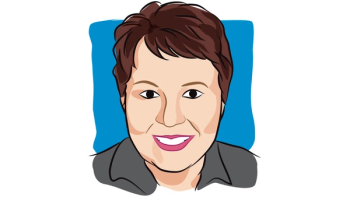
Obstacles in Lung Cancer Screening

Transcript:
Philippa Cheetham, MD: Now, you’ve talked about the stigma of smoking. That’s a big issue. Is it for many patients coming forward?
Kim L. Sandler, MD: Absolutely. I think patients are afraid if they come in and have the exam and are told that there is something abnormal, that they are then responsible. They may have family members of friends say, “Well, I told you so. I asked you to quit smoking 10 or 15 years ago. Why didn’t you listen?” And I think it can be very difficult. We don’t claim responsibility for things like breast cancer or colon cancer. And even though the stigma is difficult to overcome, it’s very, very important to be screened if you qualify.
Philippa Cheetham, MD: Now, we know for many cancers that just because you’re diagnosed with a cancer, doesn’t always necessarily mean that you need treatment. With lots of cancers, patients may have under-surveillance, prostate cancer being a perfect example. But we know that many patients, as you’ve already said, die from lung cancer. Even in 2017, we’ve come a long way. Do you think that’s another reason that may put somebody off going for screening, “Even if they detect a cancer, maybe it’s better I don’t know because I’m going to die from the disease anyway”? With screening, do you find that that can be an obstacle that patients know?
Kim L. Sandler, MD: Yes. I think there are actually two different problems. The one is overdiagnosis and overtreatment of cancers that would be indolent or would not necessarily claims someone’s life. The second is, “Well, I’m going to die from this cancer anyway because it does claim so many lives.” For the first, overdiagnosis and overtreatment are certainly an issue with screening and we’re trying to combat that with things like genetic testing and cell markers to see if we can better identify which cancers will progress and which cancers will not. For the second issue in terms of, “Well, I’m going to die from this cancer because it claims so many lives,” the best way to combat that is with early detection. If we can diagnose a stage 1 disease as opposed to a stage 3 or stage 4 disease, the likelihood of the patient surviving is much, much higher. And the extent of the treatment that a patient will require is much less and can have much less of an effect on their daily life.
Philippa Cheetham, MD: Now, before we come on to how we screen, do you think that there are gender differences in who comes forward? We know typically women tend to be a bit more proactive at seeking out health prevention. Do you find that it’s harder to get men to come for screening or is there no difference?
Kim L. Sandler, MD: In our program, it’s about 50/50. It’s pretty even. I do think women are often, anecdotally at least, better at taking care of their health and being proactive. But many women, particularly if they have families to care for, are less likely to sometimes seek treatment when they have something that’s abnormal because they don’t want to put that burden on their families. So, I think there’s a difference between who will come in for screening and then who will follow up and make sure that they get the treatment that’s needed. In our experience so far, we’ve been about 50/50 with men and women.
Philippa Cheetham, MD: Now, you’ve talked about the screening guidelines and we’re going to get into discussing exactly what screening involves. What you’re describing, is this specific to the United States or are other countries coming in line adopting similar screening programs?
Kim L. Sandler, MD: Our guidelines are based on the USPSTF, or the United States Preventive Services Task Force. So, this is a United States guideline. Screening does exist in other countries as well. Every healthcare system in every country is different, and the resources are different and what’s available. So, this is specific to United States guidelines, but there are very similar recommendations in other places.
Philippa Cheetham, MD: And where we are compared to the rest of the world in terms of our incidence of lung cancer? Are we a high-risk country, the United States?
Kim L. Sandler, MD: Absolutely, very high risk. And as I mentioned earlier, it claims more lives in this country than any other cancer and actually than many other cancers combined in both men and women.
Transcript Edited for Clarity





